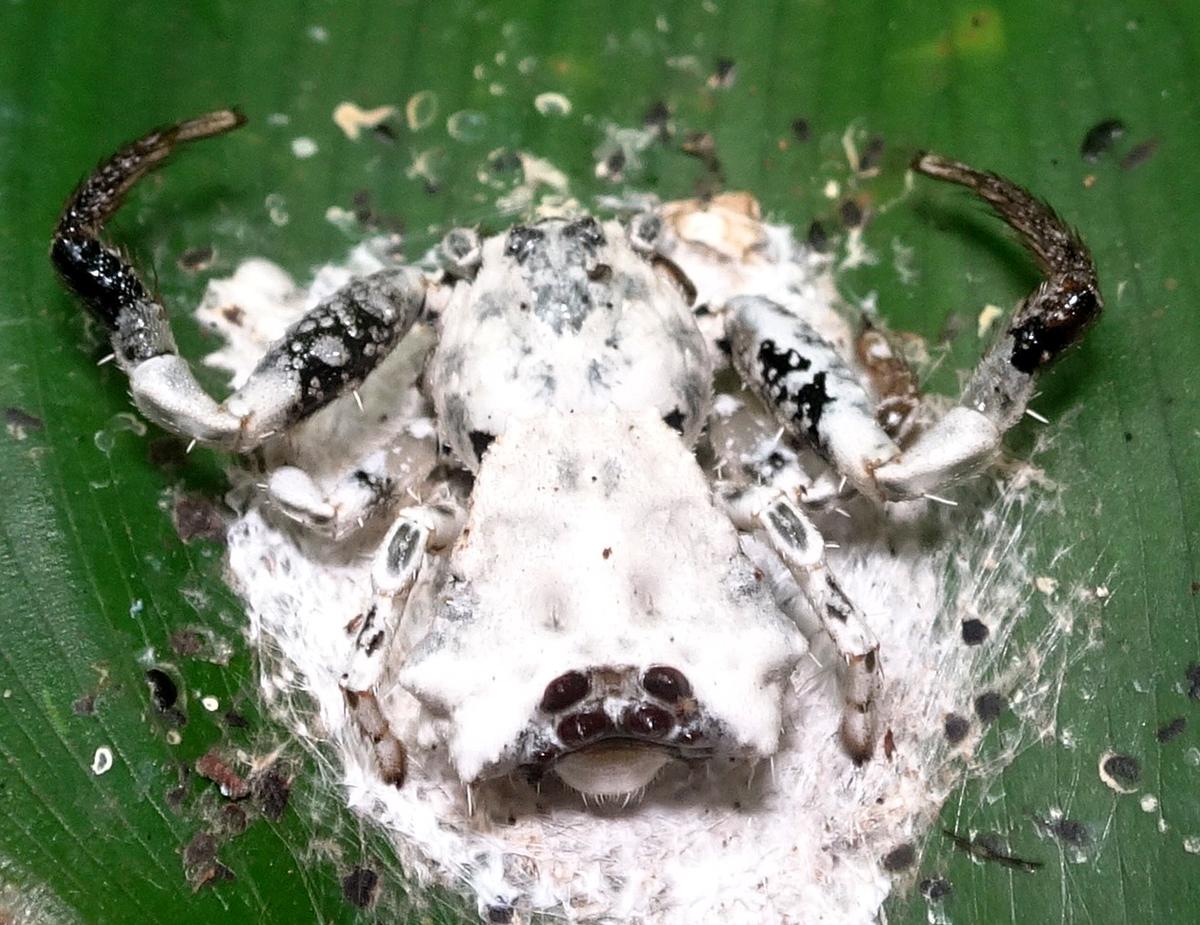
Bird dung crab spider or Phrynarachne decipiens recorded from Assam, a first for India
| Photo Credit: Special arrangement
GUWAHATI Assam has added a species of spider whose web mimics a bird’s excrement to India’s list of arachnids.
The Phrynarachne decipiens, better known as the bird dung or bird-dropping crab spider, was known to be distributed in Malaysia and Indonesia’s Java and Sumatra. It has been recorded for the first time in the country from Assam’s Sonapur in the Kamrup (Metropolitan) district and the Chirang Reserve Forest in the Kokrajhar district.
This bird dung crab spider was recorded by a team of zoologists from Assam in the latest issue of Acta Arachnologica, an academic journal dedicated to arachnids and myriapods published by the Arachnological Society of Japan.
The zoologists are Sangeeta Das of Guwahati’s Pragjyotish College, Jatin Kalita and Nilutpal Mahanta of Gauhati University, and Dulur Brahma and Paris Basumatary of Bodoland University.

The genus Phrynarachne presently consists of 35 accepted species of which three – P. ceylonica, P. ceeliana, and P. Tuberosa – before the bird dung crab spider recorded and re-described based on female specimens collected from Assam.
The last description of Phrynarachne decipiens, also based on a female specimen, was made in 1921 without much detail beyond a sketch of the habitus or general physical constitution.
“Of the three specimens studied, the one from the Chirang Reserve Forest was deposited at the museum of the Zoological Survey of India in Shillong,” Dr. Mahanta said.
The paper said the species resembles the Phrynarachne peelina in habitus but can be distinguished from the latter by the stout spermathecae (a sac-like organ in the female reproductive tract that stores sperm received during copulation) with posterior heads almost touching each other.
The eight-eyed bird dung crab spider was measured at 13.14 mm long.
“The spider is usually seen lying motionless 1-2 ft above the ground on the upper side of broad leaves. The chalky white colour of the spider and whitish deposition (its web) on the leaves, looking like bird excreta, make it very difficult to be sighted,” Dr. Mahanta said.








![Best Weight Loss Supplements [2022-23] New Reports!](https://technologytangle.com/wp-content/uploads/2022/12/p1-1170962-1670840878.png)




